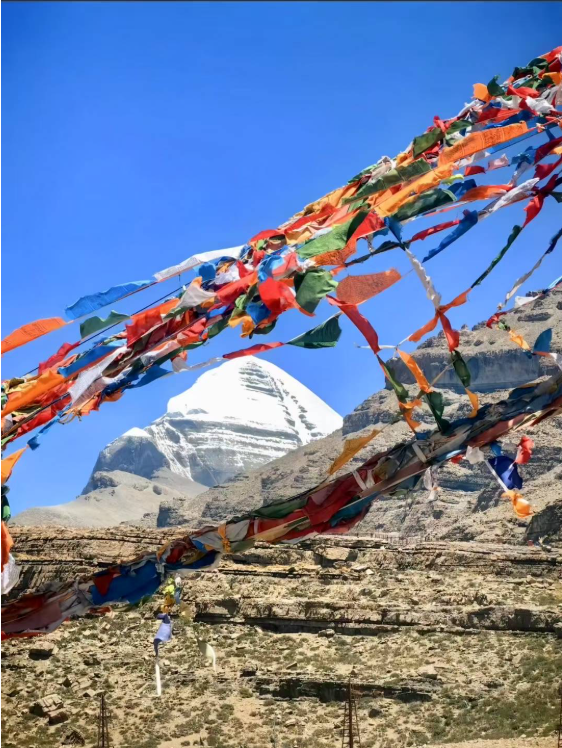The Kailash-Mansarovar-Tour is more than just a spiritual journey—it’s an exploration of nature, faith, endurance, and inner transformation. Tucked away in the remote stretches of the Tibetan Plateau, Mount Kailash and the adjacent Lake Mansarovar stand as two of the most sacred sites in Asia. Revered by followers of Hinduism, Buddhism, Jainism, and Bon, this tour draws pilgrims and travelers alike who seek not only physical adventure but also profound spiritual connection.
The tour, typically conducted through Nepal or India into the autonomous region of Tibet (China), is known for its awe-inspiring landscapes, religious intensity, and challenging conditions. Yet despite the high altitude, rigorous weather, and demanding trek, thousands of pilgrims undertake the Kailash-Mansarovar tour every year—many regarding it as the journey of a lifetime.
Mythological and Religious Importance
Mount Kailash, rising nearly 6,638 meters above sea level, is often described as the axis mundi—the center of the world. For Hindus, it is believed to be the abode of Lord Shiva, the destroyer and transformer among the Trimurti. Stories in the Shiva Purana depict Mount Kailash as the divine residence where Shiva meditates and performs the cosmic dance, Tandava.
In Tibetan Buddhism, the mountain is known as Kangrinboqê and is linked to Demchog (Chakrasamvara), representing supreme bliss. Jains believe this mountain to be Ashtapada, the site where their first Tirthankara, Rishabhdev, attained liberation. Followers of Bon, Tibet’s indigenous faith, consider Kailash to be a spiritual seat of power.
Lake Mansarovar, formed by the mind of Lord Brahma according to Hindu texts, is regarded as the most sacred lake. Its waters are believed to purify the soul, and taking a dip is said to absolve one of sins committed over multiple lifetimes.
Tour Routes and Itineraries
The Kailash-Mansarovar-Tour can be undertaken via multiple routes, each varying in difficulty, duration, and accessibility:
1. Nepal Route (via Kathmandu)
The most commercially accessible route, this itinerary begins in Kathmandu. Travelers take a flight to Simikot, followed by a helicopter ride to Hilsa on the Nepal-Tibet border. After immigration, a jeep drive takes pilgrims to Mansarovar and Kailash.
2. India Route (via Lipulekh or Nathu La Pass)
The Government of India, through the Ministry of External Affairs, organizes yatras via Uttarakhand (Lipulekh Pass) and Sikkim (Nathu La). These are regulated, require lottery-based selection, and are best suited for Indian citizens who meet physical and medical criteria.
3. Private Tour Operators
Several certified tour agencies offer private Kailash-Mansarovar packages through Lhasa or Kyirong border, often including acclimatization days, cultural stops, and medical assistance.
Key Pilgrimage Highlights
Mount Kailash Circumambulation (Kora)
A central ritual of the tour is the 52-km circumambulation (called kora) around Mount Kailash. This trek, typically spread over 2 to 3 days, begins at Darchen and includes crucial spots like Dirapuk (North Face), Dolma La Pass (5,630 meters), and Zuthulphuk Monastery.
The high-altitude pass, Dolma La, is the most challenging yet spiritually significant segment, believed to symbolize the crossing from life to rebirth. Devotees walk this circuit in a clockwise direction (except for Bon practitioners, who go counter-clockwise), chanting mantras and praying.
Lake Mansarovar Visit
Located around 30 km from Mount Kailash, Lake Mansarovar is a destination in its own right. Pilgrims perform a parikrama (circumambulation) around the lake—either by vehicle or on foot—and participate in rituals such as meditation, prayers, and holy dips.
Cultural Interaction
The journey also offers a rich cultural tapestry. In Tibet, travelers interact with local communities, visit ancient monasteries like Chiu Gompa, and witness the stark simplicity of high-altitude Tibetan life.
Preparation and Planning
The Kailash-Mansarovar Tour is physically and logistically demanding. Proper planning ensures both safety and spiritual fulfillment:
- Fitness: A good level of physical fitness is crucial. Pilgrims should begin training months in advance, including cardio workouts, walking, and altitude training.
- Medical Clearance: High-altitude sickness is a serious risk. Travelers should undergo a complete medical check-up before the tour and carry essential medications.
- Documentation: A valid passport, visa for China (Tibet), and special permits are mandatory. Tour operators usually handle group visa arrangements.
- Best Time to Visit: The tour is conducted between May and September, with July and August being the most popular months due to better weather and clearer views.
What to Pack
- Thermal clothing and windproof jackets
- Trekking boots and socks
- Personal medications and altitude sickness tablets
- Sunglasses, sunscreen, and lip balm
- High-calorie snacks, reusable water bottles, and energy drinks
- Prayer beads or religious books for personal devotion
Sustainability and Respect
Given the environmental sensitivity of the Himalayan ecosystem and the spiritual nature of the site, responsible tourism is imperative:
- Avoid littering and use eco-friendly supplies
- Respect local customs and dress codes
- Refrain from excessive photography, especially at sacred locations
- Support local businesses and guides for a more immersive experience
Challenges During the Tour
Despite its magnetic appeal, the tour poses numerous challenges:
- Altitude-related issues like headaches, nausea, fatigue, and insomnia are common.
- Weather conditions can change rapidly, with snow, wind, and low oxygen levels making travel difficult.
- Language barriers and limited communication infrastructure may be challenging for first-time international travelers.
- Limited medical access in remote areas means one must be prepared for basic self-care.
Conclusion
The Kailash-Mansarovar-Tour is an extraordinary expedition that transcends geography, religion, and the physical self. It demands commitment, courage, and faith—but offers unmatched rewards in return. The sight of Mount Kailash against the blue sky, the calm waters of Lake Mansarovar, and the spiritual energy that permeates the entire region make this journey unforgettable.
Whether you embark on the tour as a pilgrim or as an adventurer, the experience will leave a permanent imprint on your soul. It’s not just about reaching a destination—it’s about awakening a deeper connection with the divine, with nature, and with one’s inner self.
If you’re seeking a journey that challenges your limits and renews your spirit, the Kailash-Mansarovar tour might just be your calling.

